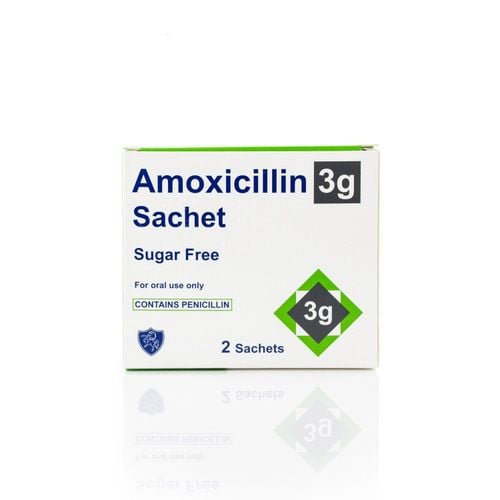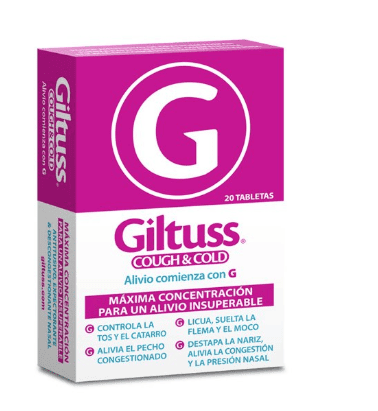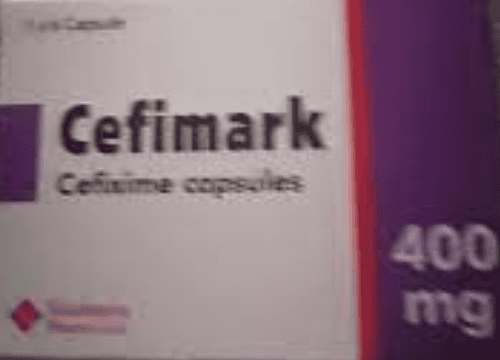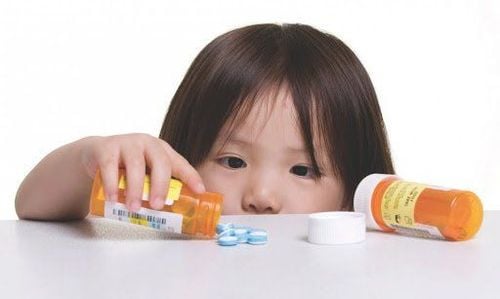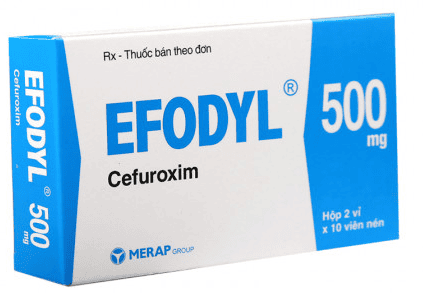This is an automatically translated article.
The drug Afefixime has the main ingredient Cefixime, which is often used in the treatment of infections such as otitis media, osteoarthritis, skin and soft tissue infections... Let's learn about the uses of Afefixim in the article. down here.
1. What is Afefixim?
Afefixim is manufactured by Medica Korea Co., Ltd - KOREA and circulated on the market with registration number VN-2878-07. Afefixim is classified into the group of anti-parasitic, anti-infective, anti-viral, anti-fungal drugs. The active ingredient in Afefixime is Cefixime.
Dosage form: There are currently 2 forms of Afefixime on the market, which are capsules (each tablet contains 200mg of Cefixime and other excipients) or powder for injection (1g content).
Packing form: Box of 2 blisters x 10 tablets (in the form of cystitis) or box of 10 vials (in the form of powder for injection).
2. What are the uses of Afefixim?
Cefixime is a third generation Cephalosporin antibiotic, has good activity against gram-negative bacteria, is stable to betalactams and can reach bactericidal concentrations in the cerebrospinal fluid. Cefixime's effect on gram-positive bacteria is less than that of first generation penicillins and cephalosporins. Cefixime is also effective against blue pus bacilli (P. aeruginosa).
Clinical efficacy of the drug has been demonstrated against common strains of bacteria such as Streptococcus p, yogennes, Klebsiella species, S. agalactiae, Proteus mirabilis, S.pneumoniae, Haemophilus influenzae, H.Prarainfluenzae, Moraxella catarrhalis, Neisseria menigitidis , N.gonorrhoeae, E.coli.
Pharmacokinetics:
Absorption: Cefixime is rapidly absorbed after parenteral administration. Distribution: The drug is 40% bound to plasma proteins, widely distributed in tissues and body fluids. Drug concentrations in the cerebrospinal fluid can reach therapeutic doses, especially in meningitis. Cefixime can cross the placenta and breast milk. Metabolism: Cefixime is metabolised in the liver. Elimination: Cefixime is largely eliminated by the kidneys.
3. Indications and contraindications of the drug Afefixime
Afefixim is usually indicated in the following cases:
Respiratory tract infections such as bronchitis, acute and chronic pneumonia, tonsillitis. Inflammation of the middle ear. Genitourinary tract infections. Skin and soft tissue infections. Welding. Gonorrhea . Prophylaxis of surgical infections. Contraindicated to use Afefixim in the following cases:
Hypersensitivity to any component of the drug Afefixim. Pregnant. Breastfeeding women.
4. Dosage and how to use Afefixime
In order to use Afefixim safely and effectively, patients must only use it when prescribed by a doctor and must adhere to the treatment schedule, not arbitrarily stop, change the dosage and route of drug administration. At the same time, Afefixim should not be shared with other people or given to other people to use even if they have the same diagnosis.
Dosage:
Adults and children over 12 years old: 50-100mg x 2 times/day, the dose can be increased to 200mg x 2 times/day. Treatment of urinary tract infections caused by gonorrhea: 400mg single dose. The dose of Afefixime should be reduced in patients with renal impairment. Administration: Oral or injected, depending on the doctor's prescription.
How to handle a missed dose of Afefixim?
When you miss a dose, take another dose instead. If it is almost time for the next dose, skip the missed dose and do not increase or double the dose to make up for the missed dose. How to deal with an overdose of Afefixime?
When detecting a patient with signs of overdose of Afefixim, it is necessary to quickly bring to the nearest emergency center for treatment. Family members are advised to bring all medications the patient has taken before to support the diagnosis.
5. Undesirable effects
In addition to the therapeutic effect, Afefixim can cause some unwanted effects during use such as: Headache, dizziness, hallucinations, arrhythmia, rash, urticaria, fever, joint pain , thrombocytopenia, leukopenia, eosinophilia, digestive disorders, pseudomembranous colitis, liver and kidney dysfunction, ...
In addition, patients may also experience side effects Other side effects have not been reported or studied with Afefixim. Therefore, contact your doctor as soon as you have any unusual symptoms during treatment.
6. Drug interactions
In order to use Afefixim safely and effectively, avoiding drug interactions, patients need to list and inform their doctor about all drugs being used to treat other diseases. At the same time, it is necessary to consult a doctor about the use of certain foods and drinks (such as alcohol, stimulants, fermented foods, ...) because drug-food interactions may occur. products during treatment with Afefixime.
Drugs that can interact with Afefixim that have been studied are Warfarin, Probenecid, Azlocillin, Fosfomycin, ...
7. Some notes when using Afefixim
Caution when using Afefixim in patients with renal failure, a history of gastrointestinal disease, colon disease.
Do not use Afefixim for pregnant women, nursing mothers and children under 6 months of age.
8. Preservation of Afefixime
Store Afefixim in the original packaging of the manufacturer, in a cool, clean place, avoid direct exposure to sunlight, the temperature is below 30 degrees C. Keep Afefixim out of reach of children as well as objects. rearing, avoiding them not knowing how to chew can cause serious unwanted effects. Do not use the drug Afefixim has expired or shows signs of change in color, properties, taste, no labels. Do not throw Afefixim down the toilet or plumbing unless told to do so. Above is all information about Afefixim, patients need to carefully read the instructions for use, consult a doctor / pharmacist before using. Note, Afefixim is a prescription drug, patients need to use the drug as prescribed by the doctor, absolutely do not self-treat at home.




